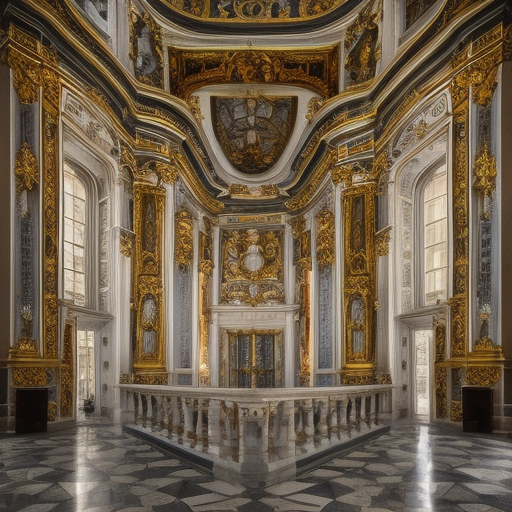Summary: Baroque architecture is a highly ornate and theatrical style that emerged in Europe in the 17th century. It is characterized by grandeur, opulence, and dramatic effects. Baroque architecture can be seen in churches, palaces, and public buildings, and it is known for its use of curved lines, elaborate decoration, and illusionistic elements. This style had a significant impact on the development of architecture and influenced subsequent architectural movements.
Origins and Characteristics of Baroque Architecture
Baroque architecture originated in Rome in the early 17th century and quickly spread throughout Europe. It was a response to the Renaissance style, which emphasized balance, proportion, and harmony. In contrast, Baroque architecture aimed to create a sense of awe and emotional impact through its extravagant and dramatic design.
One of the defining characteristics of Baroque architecture is its use of curved lines and dynamic shapes. Buildings in this style often feature undulating facades, curved walls, and domes. The use of light and shadow is also a prominent feature, with buildings designed to create dramatic effects through the play of light.
Key Elements of Baroque Architecture
Baroque architecture is known for its elaborate decoration and ornamentation. Facades are often adorned with intricate sculptures, reliefs, and decorative motifs. The use of gilding, frescoes, and stucco is also common, adding to the opulence and richness of the design.
Another important element of Baroque architecture is the use of illusionistic effects. This can be seen in the use of trompe-l’oeil, a technique that creates the illusion of three-dimensional space on a flat surface. Ceilings are often painted with elaborate frescoes that give the impression of an open sky or celestial scenes.
Baroque architecture also places a strong emphasis on the interior design of buildings. Churches, in particular, feature elaborate altars, chapels, and religious iconography. Palaces and public buildings often have grand staircases, ornate reception rooms, and lavish furnishings.
Examples of Baroque Architecture
One of the most famous examples of Baroque architecture is the Palace of Versailles in France. Designed by Louis Le Vau and later expanded by Jules Hardouin-Mansart, the palace is a grandiose display of opulence and power. It features a symmetrical facade, extensive gardens, and a Hall of Mirrors that showcases the use of light and reflection.
In Italy, the Church of Sant’Ivo alla Sapienza in Rome is a prime example of Baroque architecture. Designed by Francesco Borromini, it features a unique spiral dome and an intricately decorated interior. The facade of the church is adorned with sculptures and decorative elements, showcasing the exuberance of the Baroque style.
In Germany, the Würzburg Residence is a magnificent example of Baroque architecture. Designed by Balthasar Neumann, it is known for its grand staircase, frescoed ceilings, and ornate decoration. The residence is a UNESCO World Heritage site and is considered one of the finest examples of Baroque architecture in Germany.
Influence and Legacy
Baroque architecture had a profound influence on subsequent architectural styles. It paved the way for the Rococo style, which emerged in the 18th century and further emphasized ornamentation and elegance. The grandeur and theatricality of Baroque architecture also influenced the Neoclassical style, which sought to revive the classical forms of ancient Greece and Rome.
Today, Baroque architecture continues to be appreciated for its beauty and grandeur. Many of the buildings from this period are considered architectural masterpieces and are important cultural landmarks. The style’s emphasis on ornamentation and decoration can still be seen in contemporary architecture, albeit in a more restrained and modern form.
In conclusion, Baroque architecture is a highly ornate and theatrical style that emerged in Europe in the 17th century. It is characterized by its grandeur, opulence, and dramatic effects. Baroque architecture is known for its use of curved lines, elaborate decoration, and illusionistic elements. It had a significant impact on the development of architecture and influenced subsequent architectural movements. Today, it continues to be admired for its beauty and is considered an important part of architectural history.












